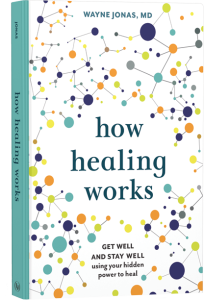If you’re like most people, the doctor you see most often is your primary care provider, likely a family physician or internist. And that’s certainly the place to start when you’re dealing with pain. Estimates are that primary care physicians treat about half of all people living with chronic pain.
However, if your pain remains uncontrolled, it might be time to seek out other practitioners.
In an ideal world, you would have access to a pain management specialist, one board certified in pain management. The American Board of Anesthesiology, the American Board of Psychiatry, the American Board of Neurology, and the American Board of Physical Medicine and Rehabilitation all offer certification after physicians complete a fellowship in pain management.
These physicians typically work in pain management centers and employ a holistic approach to your pain involving medical treatments, psychological counseling, and alternative approaches like those described below.
At the Mayo Clinic, for instance, a three-week patient-oriented pain management program involves physical and occupational therapy, education to better understand your pain, and breathing and meditation exercises to reduce anxiety related to flares. One study of 373 patients who attended the program – half of whom had been taking opioids before enrolling – found significant improvement at six months after the program ended, regardless of the amount of opioid medication they were taking prior to treatment.
However, there are a very small number of these physicians and teams available, with one study estimating that just 2 percent of people living with chronic pain receive care from these professionals in a typical month. If there are no pain specialists or teams in your area, ask about telehealth consultations. Studies find that these approaches can be just as effective as in-person visits.
Other physicians who can provide pain management services include neurologists, orthopedists, anesthesiologists, and rheumatologists. Most of these specialists deal with only one type of pain – the type involving the part of the body they treat. And while a physician should be an important part of your pain management team, you shouldn’t stop there. Studies find that an integrative approach – one that combines conventional medicine with self-care and complementary approaches – is more effective at addressing chronic pain than conventional medicine alone.
Who is Treating Your Pain?
You may see several physicians as you search for pain relief. These include:
- Primary care physicians: Pain is one of the main reasons people see their primary care physicians. They treat all conditions and should view your condition holistically.
- Pain management specialists: These physicians are often trained in anesthesia with additional training in pain management. They include interventional anesthesiologists, who can implant pumps and other devices to help relieve your pain.
- Neurologists: These physicians focus on the central nervous system. They are most likely to treat neuropathic pain, or pain related to the nerves.
- Orthopedists and sports medicine doctors: These physicians address the skeletal system, including bones, joints, and tendons.
- Physiatrists: These physicians treat a wide variety of medical conditions affecting the brain, spinal cord, nerves, bones, joints, ligaments, muscles, and tendons.
- Rheumatologists: These physicians address the immune system. They are likely to treat people with painful autoimmune diseases like lupus, scleroderma, and fibromyalgia.
Indeed, guidelines from the CDC, American College of Physicians, and other medical organizations recommend starting with non-opioid alternatives as a first-line treatment for chronic pain, including acetaminophen (Tylenol), nonsteroidal anti-inflammatories (i.e., Motrin, Aleve), antidepressants, and anticonvulsants. They also recommend non-medication approaches such as cognitive behavioral therapy – in which you learn to think differently about your pain – physical therapy, movement therapy or exercise, and also complementary approaches such as acupuncture, massage, and chiropractic services.
Who are the Complementary Pain Providers?
There are other practitioners who can work with you and your physician to relieve your pain. Among them:
- Chiropractors: Chiropractors see approximately 40 percent of people living with chronic pain, with one study finding that about a third of patients with chronic back or neck pain turned to a chiropractor. A survey from Consumer Reports found that 59 percent of people with chronic pain who saw a chiropractor were highly satisfied compared with 34 percent who saw only a primary care physician.
- Acupuncturists: There is good evidence for the long-term benefit from acupuncture on chronic pain. One study found that acupuncturists treat about 7 percent of chronic pain patients.
- Physical therapists. Physical therapists specialize in restoring function to people living with chronic pain. For instance, if you have arthritis of the knee, they work with you to strengthen the muscles that surround the knee, which can help with the pain.
- Massage therapists: About half of those who get a massage every year are doing it for some medical reason – primarily pain relief – or soreness and stiffness. One survey of more than 1,000 adults found that 89 percent believed that massage was effective in reducing pain, with 28 percent stating they used massage therapy for pain relief.
- Cognitive behavioral therapists (CBT): Dozens of studies attest to the benefits of this psychological approach, in which you work with a therapist to reframe how you think about and react to your pain.
When complementary or alternative approaches are appropriate, it is important to make sure all of your providers are communicating with each other. Simply substituting a healing practice such as massage for a medication does not make for good care. The complementary practice must be integrated properly into your treatment to be safe and effective. Sometimes, you need to act like a good quarterback to make sure your healthcare team is providing you with treatments that are complementary and not redundant or harmful.
Communicating with Your Doctor
In this day of 15- or 20-minute office visits, many physicians find themselves rushing from exam room to exam room without time to even take a breath. This can make it difficult to spend the time required to manage chronic pain. Here are some strategies to make it easier on both of you.
- Write down your concerns before your visit.
- Stay focused on one thing that’s bothering you. Is it that you can’t sleep because of the pain? You can’t play with your children? You are missing work? Tell your doctor what matters to you in addition to what’s the matter.
- Describe the pain precisely. Saying “it hurts” doesn’t help. Many clinicians use a 1-10 pain scale, with 10 being the worst pain you’ve ever felt and one being no pain. A more helpful way to describe your pain is to put it into perspective in terms of your normal life. For instance, “I used to be able to walk up and down six flights of stairs with no problem; now I have to take the elevator.”
- Track your pain. For a week before your visit, keep a pain diary in which you rate your pain every couple of hours on a scale of 1 to 10 and what you were doing. Also, track all pain medications you take. Write down any non-medical approaches you use to cope with your pain.
- Take advantage of your pharmacist if you have medication-related questions. They are knowledgeable about medications, how well they work, and side effects.
- Be honest with your health care provider in terms of alcohol and drug use, diet, exercise, and other providers you’ve seen.
- Bring a friend or family member to your appointment who can take notes. If you are in pain and/or nervous, you may forget things.
Focus on building a strong patient-doctor relationship – one that helps you improve your quality of life. For those looking to move away from opioids, remember that there are effective, accessible, non-drug options. With the right team supporting you, you can be in control of your own path to healing.
For more information read the full report.
Drawing on 40 years of research and patient care, Dr. Wayne Jonas explains how 80 percent of healing occurs organically and how to activate the healing process.



 Take Your Health Into Your Own Hands
Take Your Health Into Your Own Hands